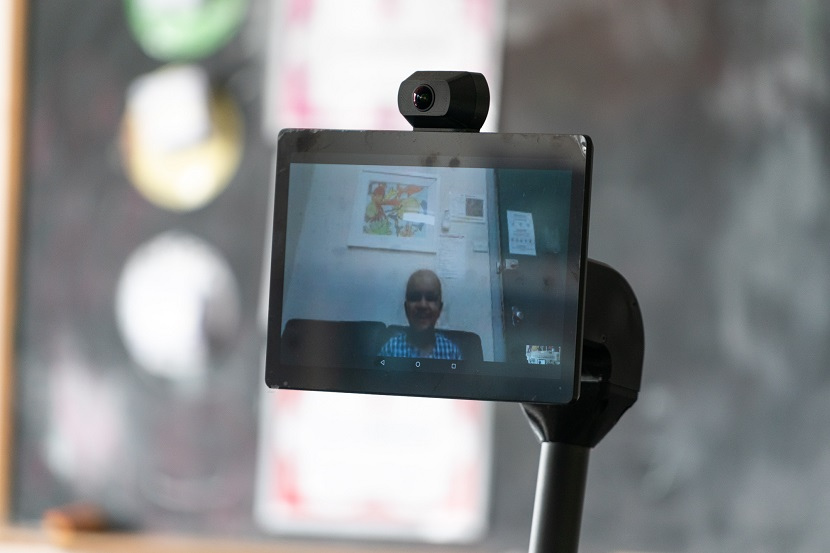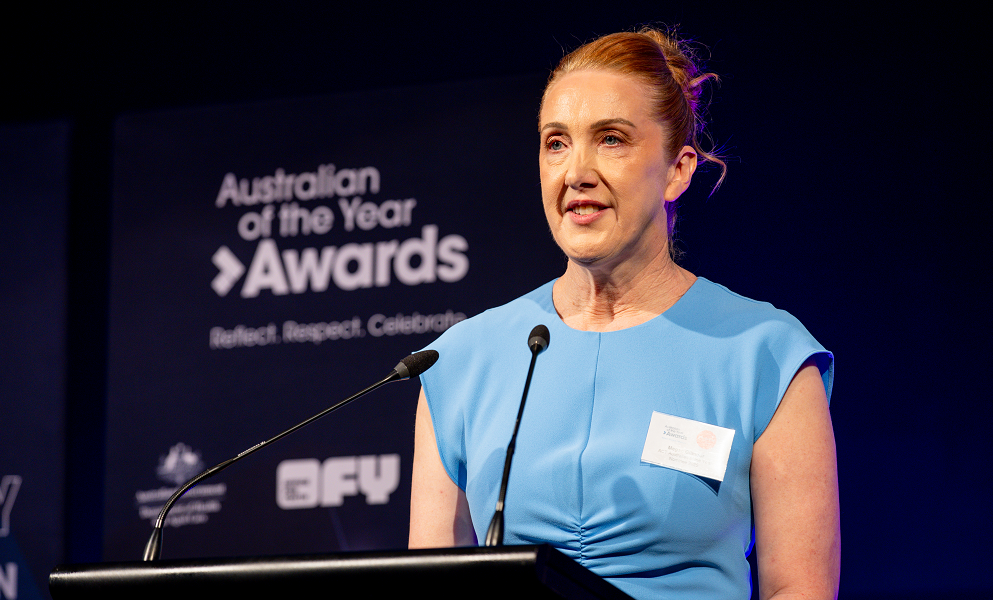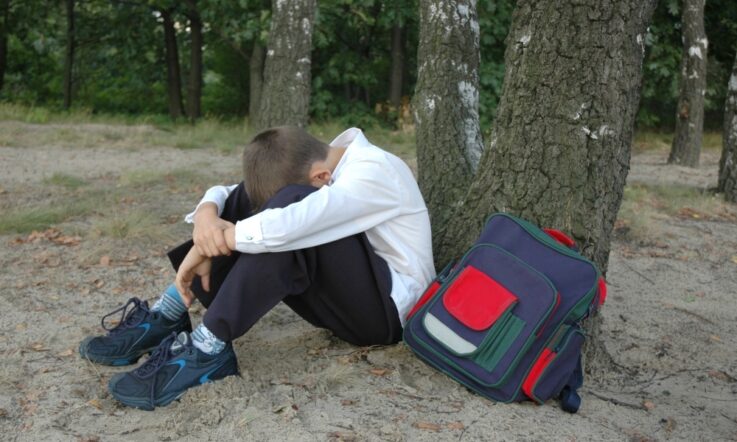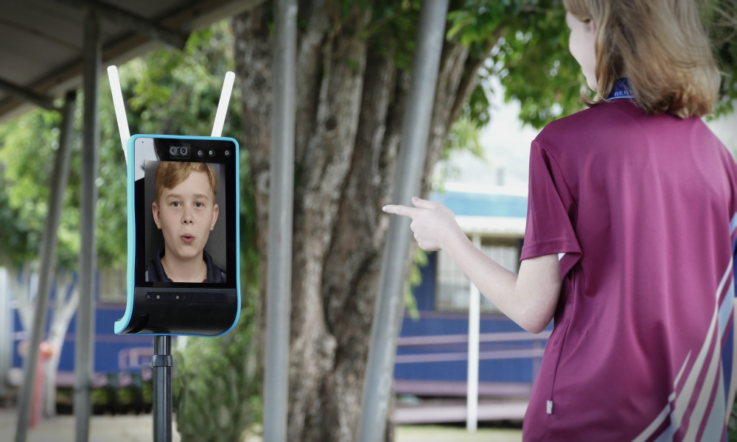‘Our goal is simple: to make sure students with chronic health conditions are seen, heard, and connected – no matter where they’re learning from.’ Megan Gilmour is the CEO and Co-founder of MissingSchool, a not-for-profit organisation dedicated to raising awareness of the educational and social needs of children who miss school because of serious illness or injury.
In 2025, Gilmour was named ACT Australian of the Year in recognition of her work to support these students, their families, their teachers and peers through difficult times. In today’s Q&A, we learn more about the work of MissingSchool, how they set up the world’s first national telepresence robot service, and how this technology is providing answers to school absence.
Congratulations on being ACT Australian of the Year for 2025. You must be thrilled with the recognition you’ve received for your work at MissingSchool. What does this all mean to you?
When they called my name, I felt this wave of relief and then just a huge surge of emotion. My very first thought was, 'Yes! At last, these kids get the platform they deserve!’
It wasn’t about me in that moment. It was about all the kids who’ve been invisibly struggling – missing school because of serious health challenges, slipping through the cracks, being forgotten.
I thought, maybe now politicians will stop and really see them. Maybe now we can move the needle on change in this national school attendance crisis. That’s what the recognition means to me. It took me 15 years to finally have that feeling and it’s a moment I’ll never forget.
Can you tell Teacher readers a bit about MissingSchool – your core purpose and why the organisation was established in the first place?
Back in 2012, we founded MissingSchool to help students with serious medical and mental health challenges stay connected to their classroom during long or frequent school absences.
It all began with my son Darcy. He had a bone marrow transplant at age 10, and while the lifesaving treatment was traumatic, what really hit hard was the loneliness and disconnection from school. He wasn’t just missing lessons – he was missing his life.
That experience showed me a massive gap in how Australia supports kids who are chronically absent. So, we set out to change that. Along the way, we've delivered service innovations, doubled down on data, and pushed policy solutions to keep kids connected to their school, learning and peers from anywhere.
But we’re not stopping there. Our vision is to take this conversation all the way to the United Nations because this is happening everywhere. And the ultimate goal? To solve the problem once and for all and close the charity.
In 2017, MissingSchool set up the world’s first national telepresence robot service. Can you tell me more about this initiative? How successful has it been over the past 8 years?
There’s no safe threshold when it comes to school absence. Missing even 10 days a semester (less than 90% attendance) can be problematic, not just academically, but also for a child’s mental health.
We see it all the time. Of the students we’ve helped at MissingSchool, 71% had their friendships disrupted. Half fell behind in their learning and experienced more anxiety. Nearly half lost social support simply because they struggled to attend. And 42% struggled going back to school, some facing so-called ‘school refusal’, which just deepens the cycle of absence and disadvantage.
The research backs this up. We know these students are more likely to underperform academically, leave school early, miss career opportunities, and face loneliness, bullying, and poor mental health. The longer they’re disconnected, the harder it gets.

That’s why, in 2017, we launched the world’s first national telepresence robot service for students who can’t go to school during a health crisis. A student can join the classroom, in real time, from hospital or home and move around via the robot. They can engage with peers, teachers and learning.
It also helps teachers. They teach once, students learn from anywhere.
Between 2018 and 2022, we worked hard to get policy approval for this technology in every Australian state and territory. That means we’ve now got a service that can work across any grade, any school, any sector – proving every child can stay present in their school community, even while they’re absent.
From a policy perspective, I’ve read that MissingSchool wants to make assistive telepresence the new standard, ensure there is training for teachers and health professionals, and use attendance data for early intervention. Why are these areas of key importance?
Right now, there’s a blind spot. Schools don’t always connect a student’s health condition with their right to support through the national Disability Standards for Education. But whether a student’s in hospital or at home, assistive telepresence can be that bridge. It’s a regulated adjustment giving access to the classroom, the curriculum, and the support students need to learn with their peers.
The fact is, Australia already has the legislation and learn from anywhere technology in schools to standardise telepresence – we’re not starting from scratch. What we need now is for policymakers to take that next step: to formally recognise students with chronic health conditions and absences as a priority equity cohort. I made this request when I recently met with Commonwealth Education Minister Jason Clare.
Next, to put the standard into practice, we need clear policy. Telepresence should be part of the everyday teaching toolkit. Once schools and health services know what’s expected, we can back them with the right systems, training, and support.
A policy path we started in 2022 is gaining momentum, with national conversations now underway for a dedicated attendance code to properly count students with chronic health-related absences. Together with absence thresholds, we’ll have an early warning system to trigger student telepresence and other regulated support to bridge non-attendance.
Let’s talk now about the impact that MissingSchool is having. Can you tell me more about your impact?
We’ve reconnected 7,200+ classmates, supported families and schools through over 600 helpline calls each month, and trained around 730 teachers in telepresence use. Our peer animations have 54,000+ views, helping classmates support each other, too.
The impact of school connection is clear. Over 1,500 surveys and interviews with teachers and parents show that telepresence has a positive effect on peer relationships, reduces student anxiety, reactivates school support, and smooths transitions between home, hospital, and school.
But behind all the data are real kids, real families, and powerful stories like Ethan’s. He was nervous the first time he logged into his telepresence robot – heart racing, unsure of how it would go. But as soon as the screen came to life, his classmates erupted in cheers. Their grinning faces, the laughter, the way they steered ‘Robo-Ethan’ into place – it was like he never left.
After a year of medical isolation through a debilitating condition, Ethan wasn’t just a student with an illness – he was back with his friends, part of the class again. That connection made all the difference. In fact, Ethan went on to finish year 12 through his robot, and now he’s studying at the Queensland Conservatorium of Music.
In February this year, you launched See-Be Teach Me, a digital training portal for helping teachers address chronic absence linked to complex health challenges. Can you tell us more about this initiative?
We know that teachers are already juggling so much, and supporting students with chronic absences and complex health issues just adds another layer, often without much guidance or training. That’s why we created See-Be Teach Me – a digital professional learning community designed for this space.
It’s built to fill the gap in evidence-based training for educators. Soon, teachers will have access to over 200 curated resources, structured training modules, and webinars with local and global experts covering everything from student learning during absences to supporting their own and student wellbeing.
But it’s intended to be much more than just a resource hub. We’re hoping to build a strong community where teachers can share experiences, swap tools, ask questions, and support each other in what can be pretty isolating territory.
It’s for teachers at any stage of their career, and for primary and secondary students (because health-related absences can impact kids of any age). And right now, while we’re still building it out, teachers can join See-Be Teach Me for free and get full access to everything that goes in there.
Finally, where do parents and schools go for resources and support to ensure that a student in their care doesn’t experience school absence to this degree?
At least 40 per cent of students who seek MissingSchool’s services have already missed 4 to 12 months of school, with 20% missing over 12 months and predicted to miss much more.
Unsurprisingly, chronic school absence doesn’t just affect the student who’s missing school, it ripples out to siblings, classmates, and families. And more often than not, it’s mums who are left carrying the load – juggling care, trying to fill the education gap, and putting their paid work and wellbeing on hold.
To get this issue on the national radar, we launched a campaign called ‘Don't You Forget About Me’. It struck a chord in 2024, reaching over 14 million Australians and clocking more than 4.6 billion impressions. That’s helped spur the conversation, but it’s also shown just how many families are looking for support.
If you're a parent or educator trying to keep a child connected to school, missingschool.org.au has practical resources and ways to get help. Our goal is simple: to make sure students with chronic health conditions are seen, heard, and connected – no matter where they’re learning from.
If you have a student with a chronic health condition, which strategies do you use to keep the student connected with their classmates and the wider school community?
What are the challenges for these students? Could technology provide additional opportunities to mitigate some of them?



